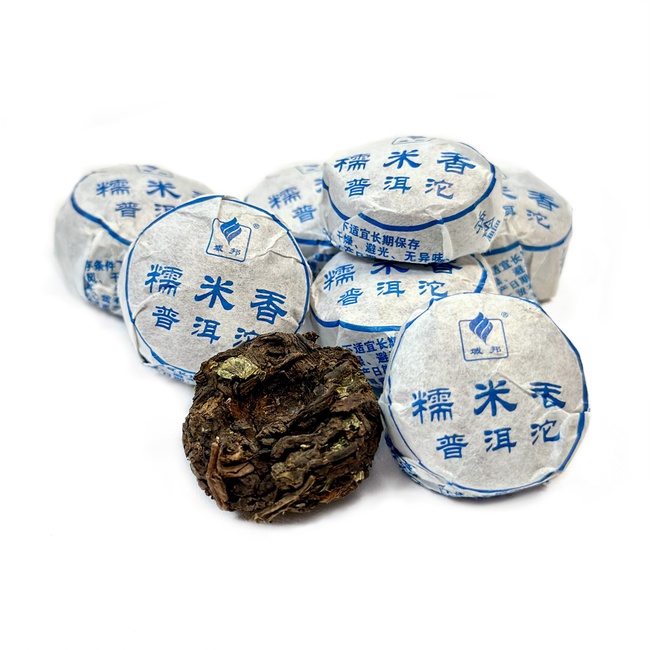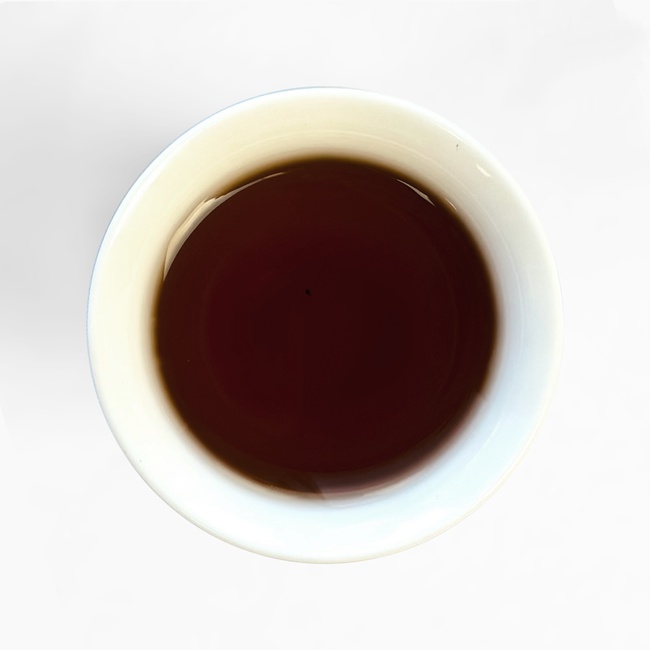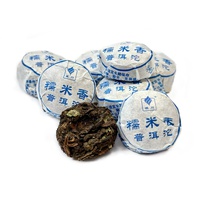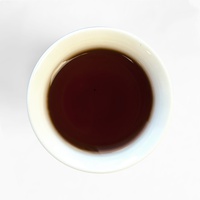STICKY RICE PUERH TEA
MEDIUM-STRONG
Earthy puerh with the unmistakably sweet aroma of fresh cooked rice.
Read more about this tea on our blog!
| Sticky Rice Puerh - 1oz/28g |
$6.50 |
|
| Sticky Rice Puerh - 2oz/56g |
$11.95 |
|
| Sticky Rice Puerh - 4oz/113g |
$21.50 |
|
| Sticky Rice Puerh - 8oz/227g |
$38.50 |
|
| Sticky Rice Puerh - 16oz/454g |
$69.95 |
|
This tea comes from a well-received 2024 entry in Murchie's Tasting Lab Online Exclusive.
Puerh tea is named for the region of Yunnan in which it's produced. Not a black tea, puerh is its own style that largely comes in two forms—shou, or cooked, and sheng, or raw.
Shou puerh is oxidized and fermented, allowing the tea to develop a very smooth body with woody and earthen flavours. This blend uses shou puerh from Menghai County, and is mixed with Nuomi Xiang herb (糯米香 - Glutinous Rice Fragrance) to impart a taste and smell reminiscent of freshly cooked basmati rice. Highly recommended for fans of Tribute Puerh or those looking to broaden their tea horizons.
Brew Guide: Remove the rice paper before steeping. It’s recommended to first steep with boiling water for ten seconds and discard the liquid. This 'first steep' helps to open the leaves up for better brewing. A good strainer is also essential, as the small leaf can slip through some coarser strainers.
Three suggested ways to steep:
- Mug – Use one piece per mug (8 oz) in a strainer (or reusable teabag). Pour over boiling water, discard after ten seconds (this rinse helps open up the leaves). Using freshly boiled water, steep for one minute. Second steep for two minutes. Third steep, four minutes. Steep-time can be adjusted for a larger or smaller mug.
- Teapot – Use one piece for a two or three cup teapot. Pour over boiling water, discard after ten seconds. Steep at two minutes, serve by pouring through a strainer, keeping the leaves in the teapot. Top up teapot immediately with fresh boiled water and continue steeping. Top up teapot as needed until the tea loses flavour.
- Gaiwan – Use one piece and adjust steeping time depending on size of the gaiwan (100-120mL). Rinse with boiling water as above to wake up the leaves. First, second and third steeps, ten seconds each. Increase by five seconds for subsequent steeps. This tea should last upwards of seven steeps.
Tasting Notes: Initial sips lead with a woodsy, earthy flavour, followed immediately by a slightly creamy sweetness, flavours of milk bread, basmati rice, and lingering vanilla. The taste of nuomi xiang is evident, but not overpowering, mixing very nicely with the peaty puerh.
| Caffeine | Caffeinated |
|---|---|
| Cup Strength | Medium-Strong |
| Origin | China |
| Tea Format | Loose Tea |
| Type | Puerh |
Incredibly Smooth and Comforting Review by ['Stammered']
I typically only drink puerh at dim sum. The sticky rice essence piqued my interest and wow am I glad I bought three packages. I followed the brewing instructions but in a standard sized teapot. I appreciate the longevity being able to steep it multiple times, the individually wrapped little pucks that take the guesswork out of measurement, but above all, the incredibly smooth, earthy and prominent sticky rice essence. It is an incredibly comforting tea warm on a cool day but I also enjoy it very much over ice - not sure if that’s sacrilegious but very refreshing on a hot day. A must try and must buy!
Posted on 2025-05-17Excellent Tea Review by ['Misha']
Very unique taste. One of my favourite teas,
Posted on 2025-03-13Best puerh tea Review by ['YV']
Growing up, we’ve always had Puerh tea at home or when we went out for dim sum. So it was a surprise to see this version when visiting Vancouver for the first time, and when the lady at the counter let me smell - wow! The combination of sticky rice and puerh together is perfect. I hope this stays in the store forever and is not a limited edition. Best tea ever. And I’m glad I can purchase it online from Murchie’s!
Posted on 2025-03-10Tasty Treat Review by ['LD']
I enjoyed this with milk - came make several cups per packet. A lovely meal in a cup.
Posted on 2024-09-16Write your Own Review
You're reviewing: Sticky Rice Puerh Tea
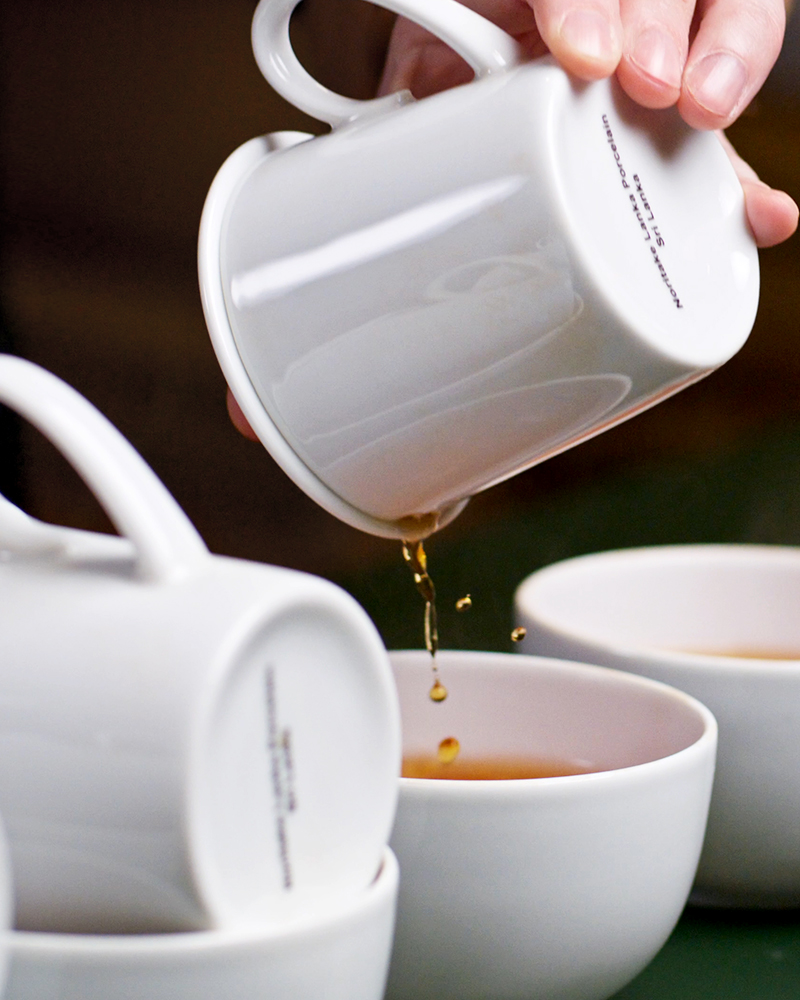
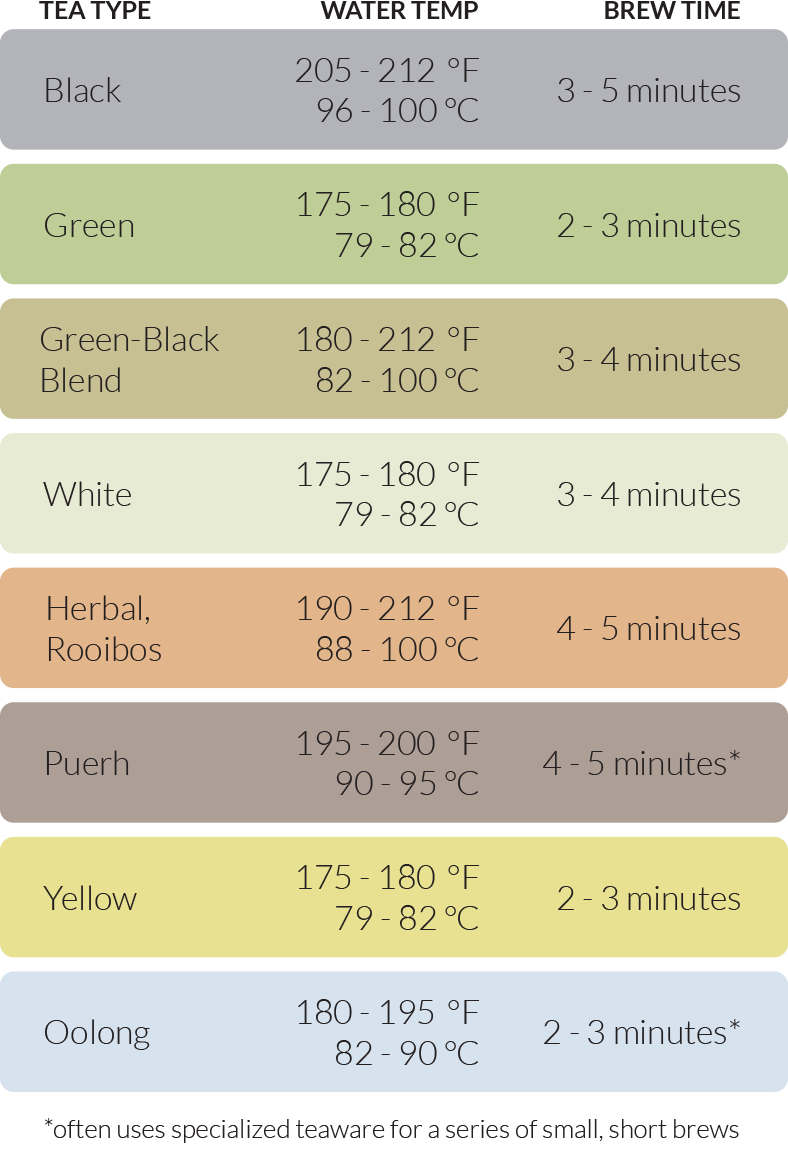
Steeping the Best (Guide)
Different types of teas should be steeped according to certain times and water temperatures to bring out their best flavours. Use this guide as a starting point, and then experiment until you find the perfect brewing method for your favourite tea.
Based on approximately one level teaspoon (2.5 g) of loose tea or one tea bag per 6-8 ounce (180-240 mL) cup. For stronger flavour, add more tea. Brewing for longer may increase the strength of the tea, but will likely also cause bitterness.
Tea Bags vs. Loose Tea
While our tea bags and loose tea are crafted to match the same flavour profile, there are discernable effects between the two formats. Namely, the leaves inside tea bags are milled, making it much finer and a quicker brew, while loose tea can take a couple minutes longer to steep. Tea bags are very convenient, but loose tea can be more visually appealing and brewed with a reusable infuser.
- Tea bags: steep for 3 - 4 minutes
- Loose tea: steep for 4 - 5 minutes
General Steeping Temperatures
The table included here shows some general guidelines for steeping different kinds of tea. Be mindful that some teas, even two from the same category, will brew differently than others. In particular, our green-black blends will often have different ratios of green and black teas - the more green-leaning ones should be brewed at a lower temperature range. Experimentation is highly encouraged, as tea is very much a matter of personal taste.
Puerh and oolong teas are often steeped multiple times for a shorter period of time in smaller brewing vessels. This method creates a curious exploration of the tea as it unfurls, developing new flavours with each subsequent brew - often making for great social conversation.
If you're unsure, try steeping in the middle range for your tea type. If the result is too bitter, steep at a lower temperature or for a shorter time. If the result is flat, try a higher temperature.
All About Iced Tea
Cold Brew - Recommended for green, fruit and herbal teas
A convenient way to make iced tea and forget it. Many teas take as little as 2 hours, but leave in the fridge for 24 hours for best results. Cold brews can last up to a week when refrigerated, with the exception of fruit teas (real fruit pieces) lasting up to a few days due to sugar content. Blueberry Green and Spring Green are excellent cold brewed.
- 1 teaspoon green or herbal tea per 1 cup cold water, refrigerate 1-24 hours
- 1 tablespoon fruit tea per 1 cup cold water, refrigerate 1-24 hours
Hot Brew & Chill - Recommended for rooibos, black, oolong, and green-black teas
Short on time? Make your hot tea at 2-3x the regular strength, then flash-chill over ice! A strong concentrate of tea can be diluted with ice to suit your tastes. Lemon Black, Black Currant and Canadian Breakfast do exceptionally well with this method.
- 2-3 teaspoons tea per 1 cup hot water, brew 5 minutes and pour over ice
Iced Tea Additions - Try adding fruit juice or soda water, or milk for an iced tea latte
For a refreshing twist, mix half lemonade or fruit juice, or add some fresh fruit or crushed mint. For an iced latte, make your tea extra strong and top it up with milk. Try this method with our Earl Grey or Bombay Chai!

